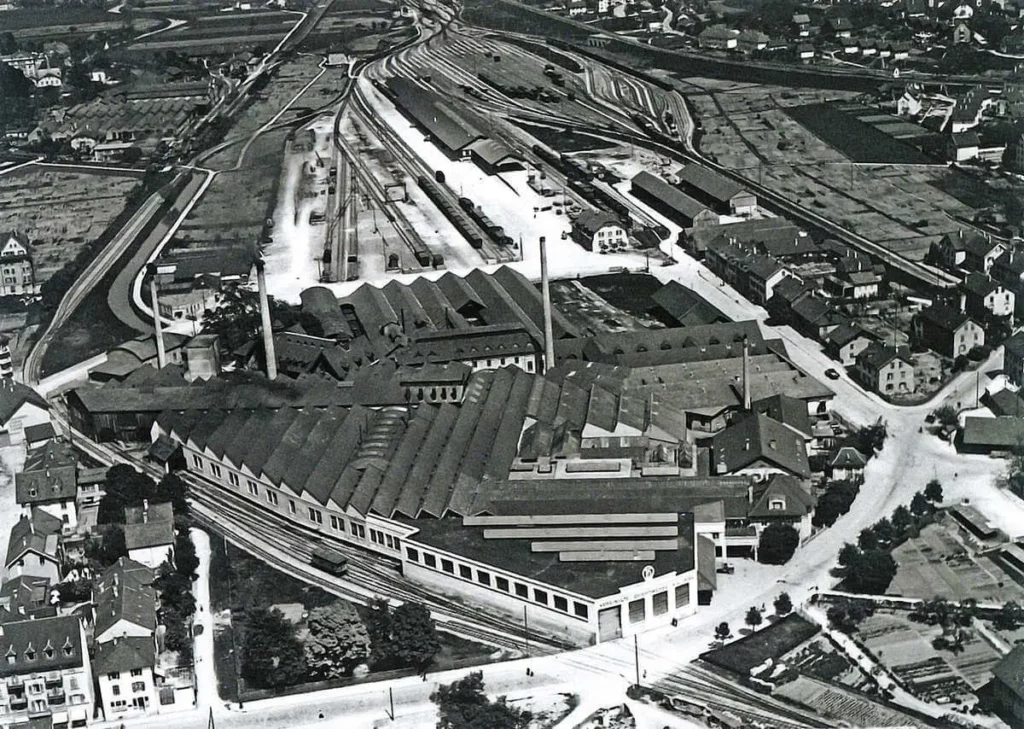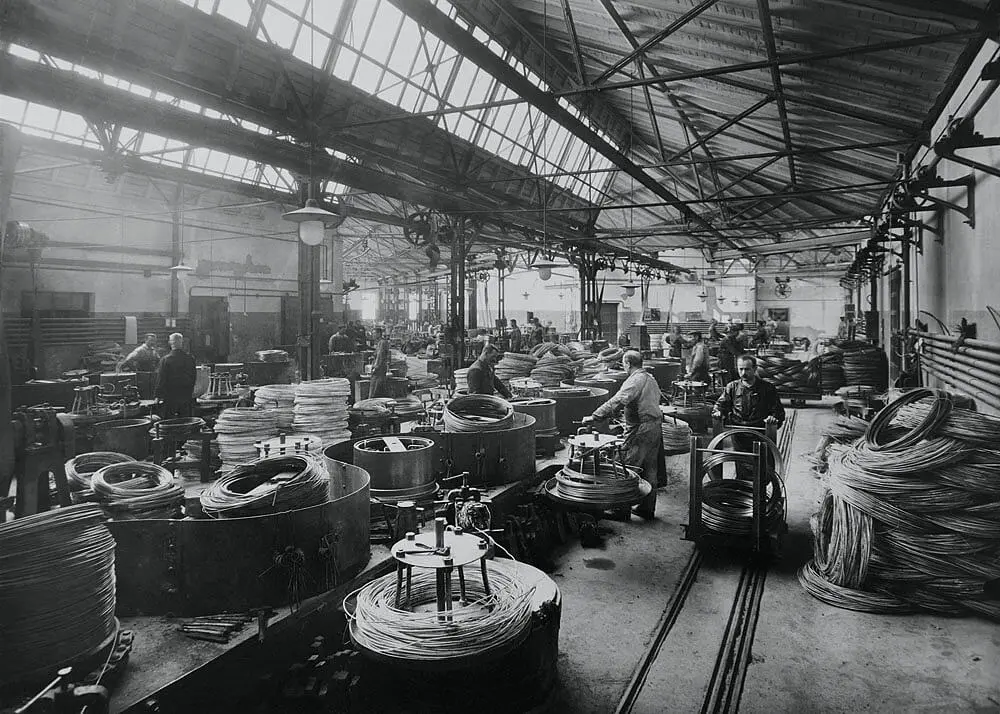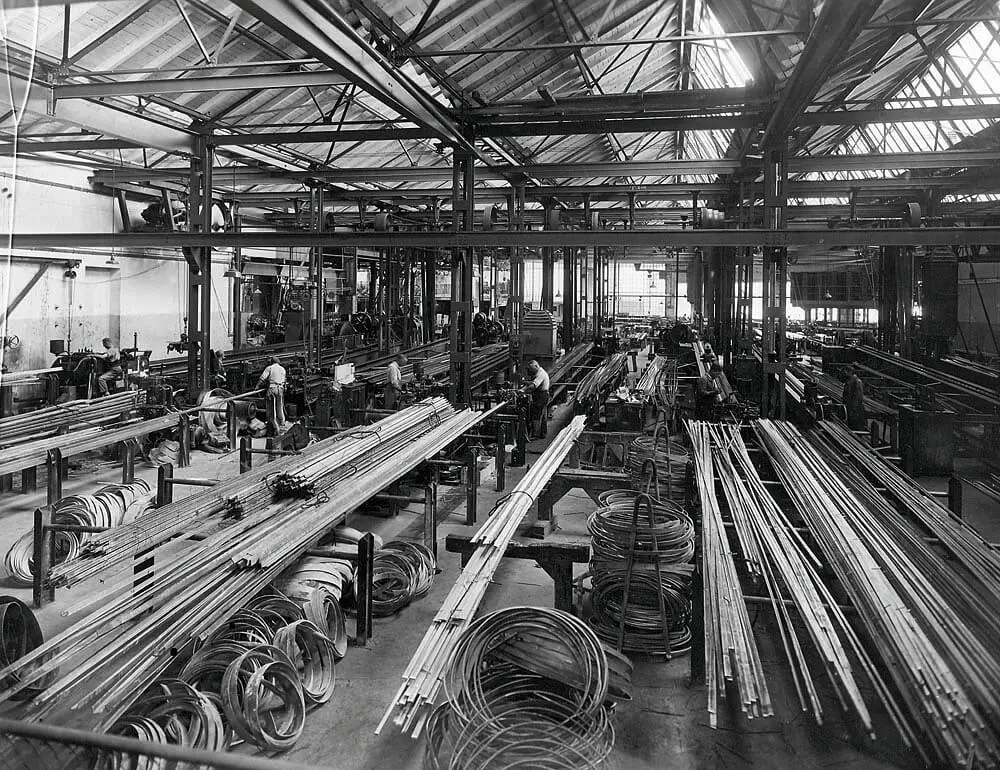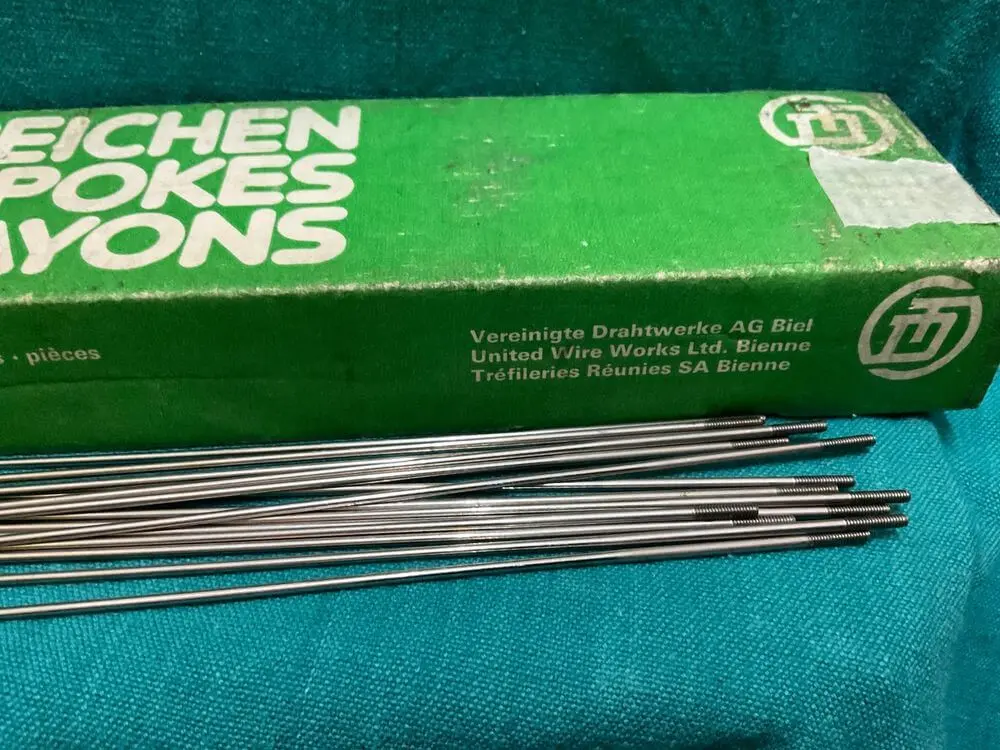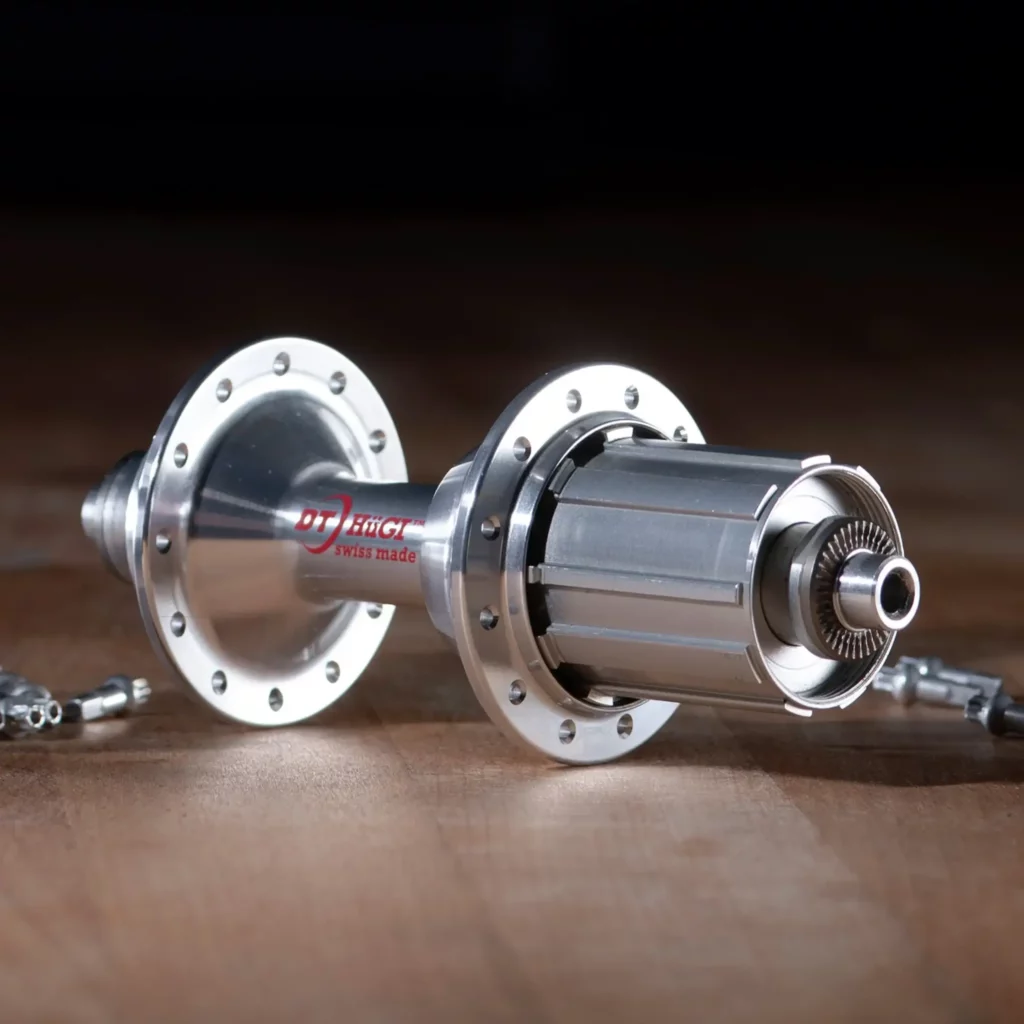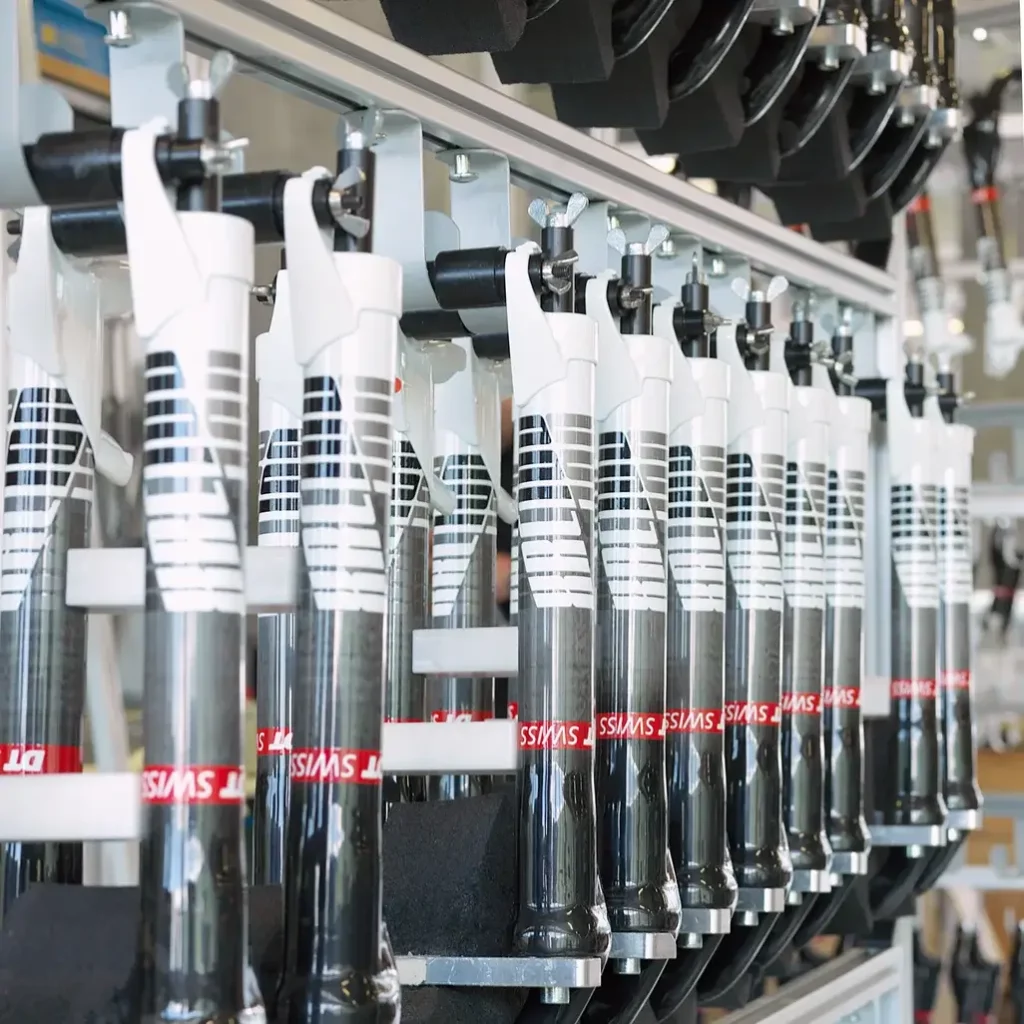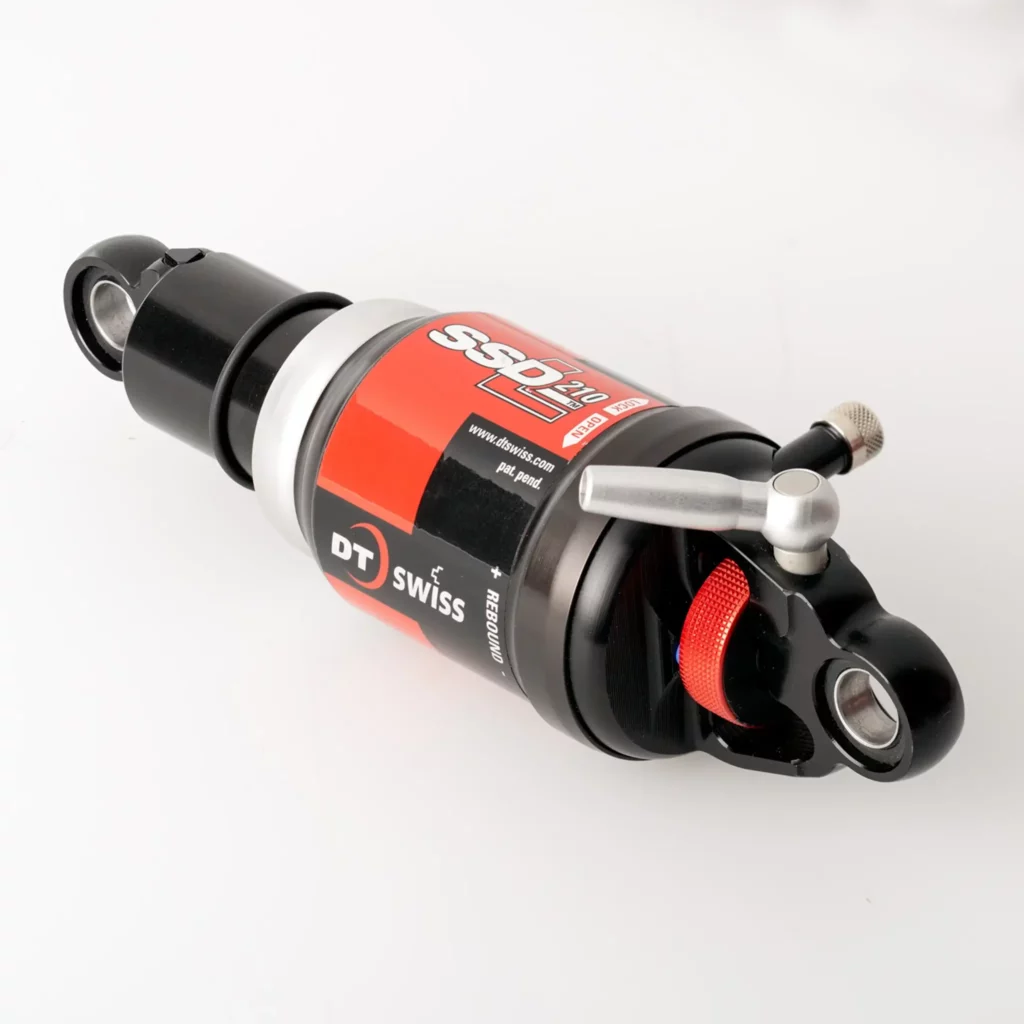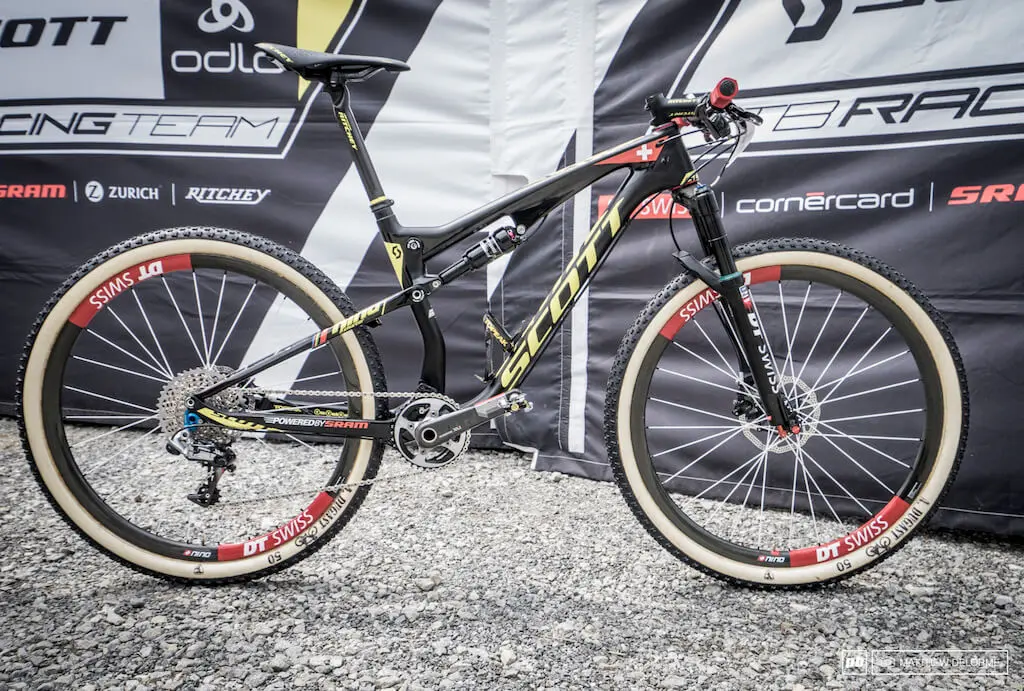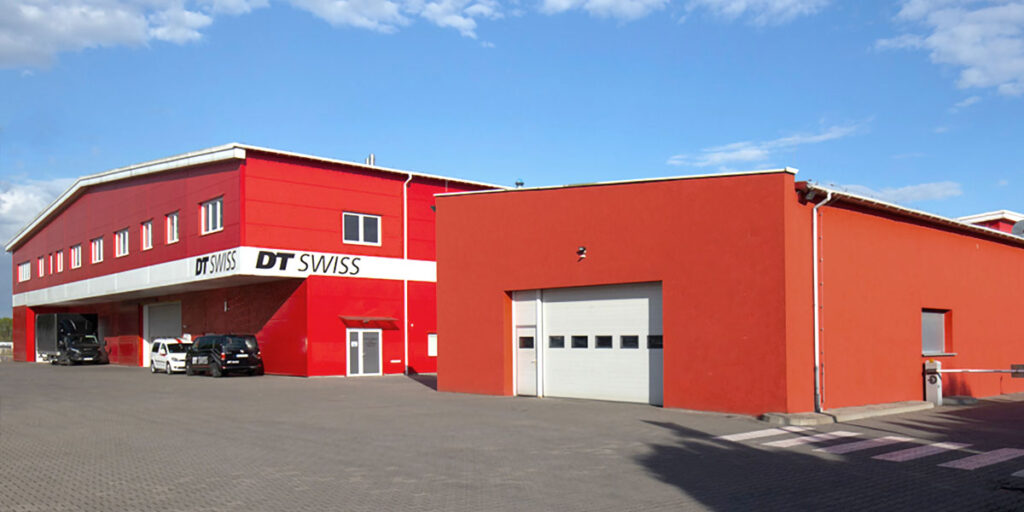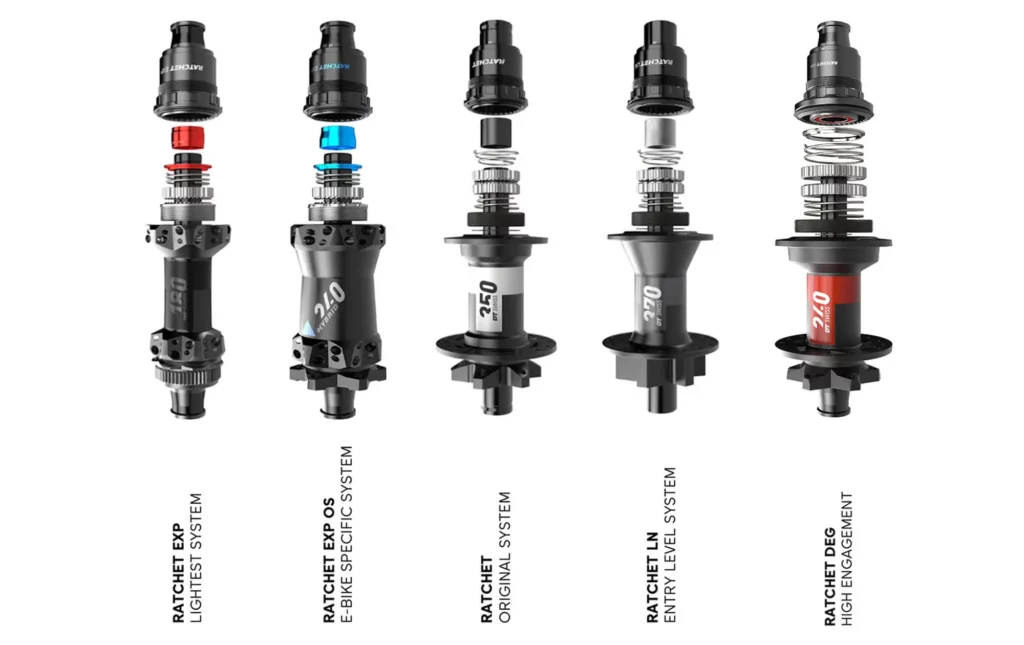DT Swiss
DT Swiss: The story of the Swiss giant of carbon wheels
If you’re a cyclist fascinated by components that combine impeccable Swiss precision with top-tier performance, or if you’re curious about how a brand can transform a four-century-old industrial legacy into a global benchmark for carbon wheels, this article about DT Swiss is for you. Officially founded in 1994 in Biel, Switzerland, but with roots stretching back to 1634, DT Swiss embodies a unique story where tradition and innovation collide. We’ll trace its journey, from its origins in a small wire-drawing workshop to its current status as a leader in modern cycling.
The history of DT Swiss: from raw steel to the pinnacle of cycling
1634-1900: The origins of ancestral craftsmanship
The story of DT Swiss begins in 1634, long before the bicycle existed, in the Taubenloch Gorge, a picturesque site near Biel in the canton of Bern, Switzerland. A physicist named Scharandi set up a small wire-drawing workshop there, crafting steel wires from raw ingots by hand. In an era when industrialization was still in its infancy, this trade relied on techniques passed down through generations. For over two centuries, this wireworks remained a local business, supplying wires for various uses: ropes, agricultural tools, and even parts for the budding watchmaking industry in the region.
By the 18th century, Biel had become a modest yet strategic industrial hub, thanks to its position between Switzerland’s French- and German-speaking worlds. The wireworks thrived quietly, adopting innovations like water-powered rolling mills that partially mechanized the process. By 1850, it joined a broader network of manufacturers under the Vereinigte Drahtwerke (United Wireworks), a collective of Swiss metalworking specialists. At the end of the 19th century, as the bicycle emerged as a cultural and sporting phenomenon in Europe, the steel wires from Biel found new applications: brake cables, reinforcements for primitive tires. These indirect first steps into cycling planted the seeds for a future revolution.
1900-1993: A transition to cycling
The 20th century marked a slow metamorphosis for United Wireworks. In 1934, as the company celebrated three centuries of existence, it began producing bicycle-specific components: hardened steel spokes, rudimentary rims, and even metal mudguards. At the time, cycling was booming across Europe, especially in Switzerland, where Alpine roads drew racers and enthusiasts alike. Biel’s spokes, renowned for their strength and uniformity, became a favorite among local manufacturers like Condor and Allegro—Swiss brands now etched in history.
During World War II, production slowed, but Switzerland’s neutrality ensured stable industrial activity. The postwar “Trente Glorieuses” (Glorious Thirty) brought surging demand for bicycles, both for transportation and competition. United Wireworks invested in modern machinery, like high-precision presses, to ride this wave. By the 1960s, their spokes equipped Swiss pro teams racing in major classics, cementing their reputation in cycling circles. Yet, the company remained a diversified industrial entity, also producing cables for cars and wires for electronics.
The 1980s brought headwinds: globalization and Asian competition eroded European manufacturers’ margins. United Wireworks faced a crisis, marked by layoffs and restructuring. In 1993, amid these challenges, management decided to split its operations. The cycling division, then a small but promising segment, caught the eye of three ambitious executives: Marco Zingg, Maurizio D’Alberto, and Franck Böckmann. This trio saw an opportunity in these industrial roots to create a bike-focused brand—a vision that would give birth to DT Swiss.
1994-1999: Foundation and first triumphs
DT Swiss AG was officially born in 1994, the result of a bold management buyout led by Zingg, D’Alberto, and Böckmann. They acquired United Wireworks’ spoke division, aiming to turn this heritage into a modern, specialized company. The name “DT Swiss” is a dual nod: “DT” stands for “Drahtwerke Tréfileries” (wireworks in German and French), while “Swiss” roots the brand in Switzerland’s tradition of precision and quality. Based in a renovated factory in Biel, they started with a small but determined team.
In 1995, DT Swiss made a splash with the launch of its Ratchet hubs. This patented, revolutionary Ratchet system used two interlocking toothed rings for simultaneous engagement, delivering fast response (18 points at the time) and exceptional durability. The hub became a calling card, catching the eye of bike manufacturers and pro riders. By 1996, DT Swiss opened a subsidiary in Grand Junction, Colorado, to tap into the booming U.S. mountain bike market. In 1999, the brand rounded out its offerings with aluminum and brass nipples, solidifying its mastery of wheel components. This lineup would go on to equip brands like Cadex, Roval, Lightweight, Bontrager, Enve, Syncros, and more.
2000-2010: A decade of growth and Diversification
The early 21st century propelled DT Swiss onto the global stage. In 2001, the acquisition of Pace, a British suspension brand, marked a turning point. Finalized after months of negotiations, this move brought DT Swiss into the mountain bike fork and shock market. The team integrated Pace’s expertise in Biel, developing lightweight, adjustable suspensions that won over European and American riders. This strategic choice broadened their portfolio, positioning them as a versatile player.
In 2003, DT Swiss received the Mittelland Region Entrepreneur Award, a regional honor celebrating its innovation and economic impact. That same year, the brand began producing rims, followed in 2004 by complete wheelsets—integrated systems combining their own spokes, hubs, and rims. These wheels, initially alloy but soon carbon, attracted giants like Giant, Scott, and Canyon, who incorporated DT Swiss products into their high-end bikes. In 2005, a factory opened in Taiwan, at the heart of Asia’s cycling industry, to cut costs while upholding high standards.
In 2007, a new factory opened in Oborniki, Poland, dedicated to wheel assembly and European logistics. Chosen for its skilled workforce and proximity to key markets, this site churns out thousands of wheel pairs annually. By 2010, DT Swiss marked 15 years with a strong presence in the pro peloton: their carbon wheels equipped triathletes and Olympians, while their suspensions dominated World Cup MTB podiums with legend Nino Schurter. This decade established DT Swiss as an essential brand, blending artisanal heritage with global ambition.
2011-2021: Modernization and resilience
In 2011, DT Swiss unveiled a new headquarters in Biel, an ultra-modern complex replacing the historic factory. Equipped with R&D labs and an optimized production line, it symbolized a forward-looking brand. The 2010s brought adaptation to cycling’s evolution: disc brakes, widely adopted post-2015, prompted DT Swiss to redesign its hubs and rims. The gravel boom inspired versatile wheels like the GRC series, tested on the rocky trails of Graubünden.
In 2016, Marco Zingg stepped down for personal reasons, leaving Böckmann and D’Alberto at the helm. This transition coincided with the euro crisis, which strained Swiss exports. Yet DT Swiss weathered it through cautious management and a sterling reputation. In 2018, their spokes hit a symbolic milestone: over 100 million units sold since 1994, reflecting their dominance in this field. In 2021, the brand celebrated 25 years by equipping champions like Nino Schurter, whose Olympic medals underscored DT Swiss’ reliability.
2022 to today: Legacy and global vision
In 2022, DT Swiss took a new leap with the acquisition of Trickstuff, a German high-end brake manufacturer. Finalized after complex talks, this move enriched their catalog with precise braking systems, meeting rising demand for fully equipped bikes. By 2024, suspension production gradually shifted to Oborniki, Poland, to optimize costs, while Biel remained the nerve center for spokes and hubs.
Today, in 2025, DT Swiss celebrates 30 years of official existence and nearly 400 years of indirect heritage. With 600 employees worldwide, including 180 in Biel, the brand still dominates the spoke market (70% of its original business) while excelling in carbon wheels and suspensions. Its products equip a pro team (Uno-X) and appear in the Tour de France, Olympic MTB champions, and amateur cyclists in over 50 countries. The Ratchet system has evolved to 54 engagement points, then 90 recently (DEG), remaining an icon often licensed to other manufacturers. DT Swiss embodies a rare success: a company that turned ancestral craftsmanship into a global force, all while staying true to its Swiss roots of precision and excellence.
For more information, visit the official DT Swiss website.


